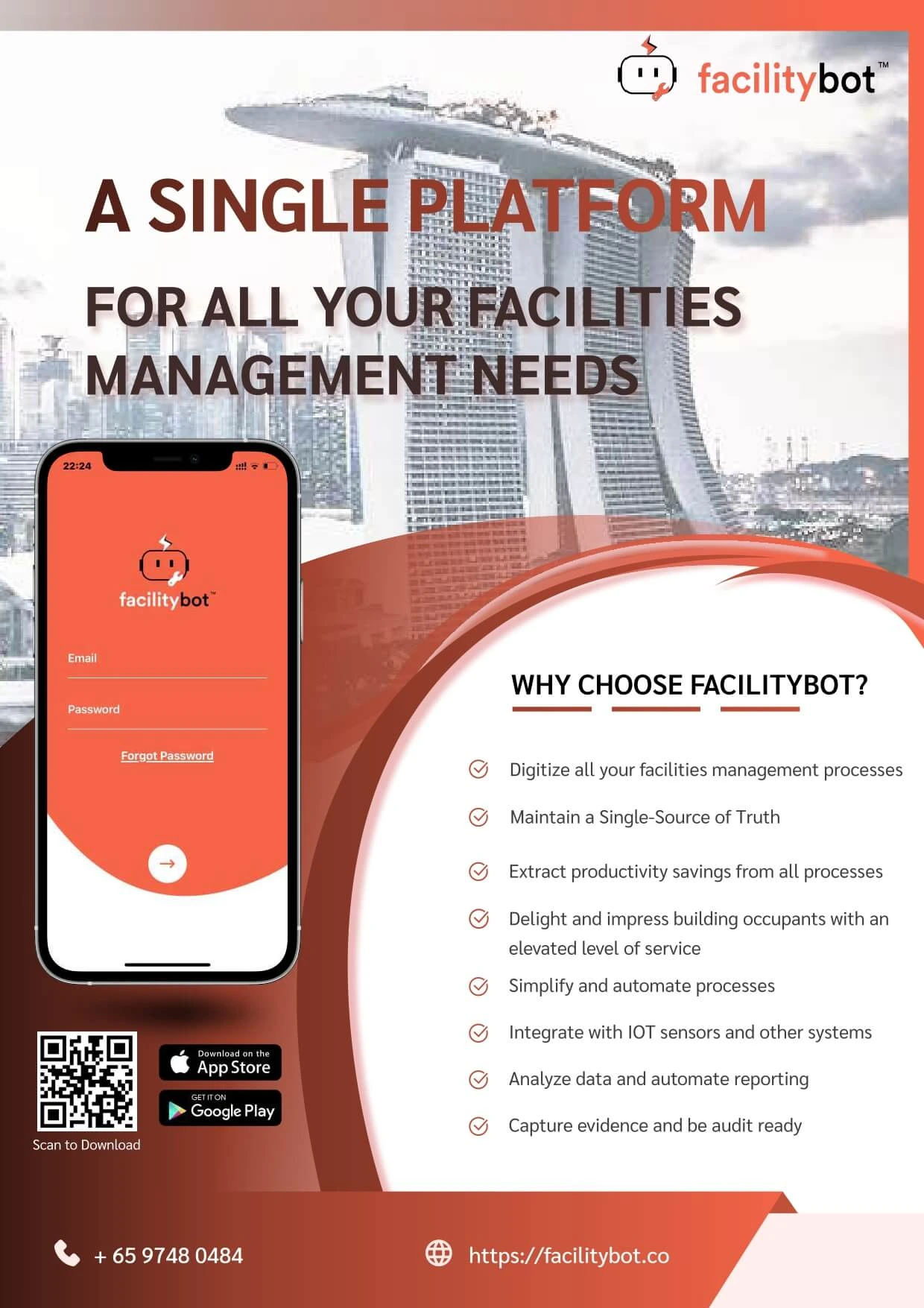As energy costs rise and sustainability targets become more demanding, facility managers face increasing pressure to cut consumption, minimize waste, and operate buildings more efficiently. Traditional energy management methods—manual audits, periodic checks, and guesswork—are no longer enough. Today, the path to a greener and more cost-effective facility lies in AI energy efficiency and the power of intelligent automation.
From predictive analytics to real-time energy monitoring, AI-driven facility management solutions are reshaping how buildings use energy. Modern tools like FacilityBot help facilities reduce consumption, optimize equipment performance, and achieve sustainability goals faster and more accurately than ever before.
This article explains how AI enhances energy optimization and why every modern facility should adopt sustainable facility management software.
The Growing Need for Energy Optimization in Facilities
Facilities consume nearly 30–40% of global energy output, making them a major contributor to operational costs and carbon emissions. With stricter environmental regulations and growing public awareness, organizations must:
- Reduce energy waste
- Improve system efficiency
- Monitor real-time usage
- Comply with sustainability standards
- Lower operational expenses
Without automation, managing these demands manually becomes overwhelming. AI introduces smart intelligence that continuously learns, predicts, and adapts energy strategies for maximum impact.
How AI Drives Energy Efficiency in Modern Facilities
The true power of AI energy efficiency lies in its ability to analyze massive data streams in real time—from HVAC systems and lighting to occupancy levels and weather patterns. Unlike traditional systems, AI doesn’t simply monitor energy—it optimizes it.

Key AI capabilities include:
Predictive Energy Analytics
AI algorithms forecast energy demand based on historical patterns, occupancy trends, and external factors. This helps eliminate overuse and reduce peak-time expenses.
Intelligent HVAC Optimization
HVAC systems account for nearly 50% of energy use in commercial buildings. AI fine-tunes temperature settings, adjusts airflow, and reduces runtime without compromising comfort.
Automated Lighting Control
AI-powered smart lighting systems adjust brightness, detect unused spaces, and turn off lights automatically.
Real-Time Energy Monitoring
Facilities gain visibility into energy use across zones, floors, or assets—identifying inefficiencies immediately.
Equipment Efficiency Tracking
AI identifies underperforming equipment and advises maintenance before energy waste occurs.
Platforms like FacilityBot integrate with IoT sensors and building systems to deliver these insights through clean, actionable dashboards.
Predictive Maintenance for Energy-Intensive Equipment
Poorly maintained equipment consumes more energy and has a shorter lifespan. Instead of waiting for HVAC units or motors to fail, AI uses real-time data to predict issues before they escalate.
AI-powered predictive maintenance helps by:
- Identifying abnormal energy spikes
- Detecting equipment inefficiencies
- Scheduling maintenance proactively
- Reducing downtime and energy waste
- Extending asset lifespan
FacilityBot’s predictive maintenance engine allows facility managers to automatically generate work orders when anomalies occur, ensuring critical systems stay energy-efficient.
AI + Building Management Systems (BMS): A Powerful Combination
Integrating AI with existing BMS infrastructure enhances performance significantly. Instead of static time schedules, AI uses dynamic, data-driven control strategies.

For example:
- AI adjusts cooling levels based on real-time building occupancy.
- AI changes ventilation rates based on indoor air quality data.
- AI dims lighting automatically during daylight peaks.
This makes sustainable facility management software more adaptable and efficient, helping organizations achieve long-term sustainability goals.
Improving Sustainability Through Data-Driven Decisions
AI transforms raw building data into valuable sustainability insights. Facility managers can instantly see:
- Energy usage by department or zone
- Power-hungry assets
- Seasonal usage fluctuations
- Carbon footprint metrics
- Opportunities for efficiency improvements
FacilityBot’s analytics dashboards make these insights accessible, empowering facility teams to make informed decisions that reduce environmental impact and operational cost.
Enhancing Compliance With Environmental Standards
Governments and organizations are implementing stricter guidelines such as:
- LEED certification
- ISO 50001
- Carbon reporting requirements
- Local building energy standards
AI helps facilities stay compliant by automating monitoring, documentation, and reporting. Instead of manual spreadsheets, facilities get:
- Auto-generated energy reports
- Instant compliance dashboards
- Alerts for deviations or violations
This ensures the facility maintains sustainability goals and reduces risks associated with non-compliance.
The Role of AI in Reducing Utility Costs
AI doesn’t just optimize energy use—it directly reduces operational expenses.
Cost-saving benefits include:
- Lower HVAC run times
- Reduced peak-demand charges
- Reduced equipment failure costs
- Lower lighting energy waste
- Improved worker productivity
- Reduced carbon tax penalties
For large buildings, these savings can translate into thousands—or even millions—of dollars annually.
FacilityBot helps organizations maximize these financial benefits through targeted optimization and energy automation.
How AI Supports Net Zero and Corporate Sustainability Goals
More organizations are committing to net-zero carbon emissions. Achieving this requires precise, data-driven energy management strategies.
AI helps facilities by:
- Monitoring renewable energy usage
- Managing smart grids
- Optimizing solar and stored energy consumption
- Reducing reliance on traditional grid electricity
AI-driven platforms like FacilityBot help organizations meet ESG (Environmental, Social, Governance) goals through continuous energy performance improvement.
Why Every Facility Needs AI-Based Energy Optimization Now
AI energy optimization is no longer optional—it’s essential. Facilities adopting AI today gain a strong competitive advantage through:
- Sustainable operations
- Lower utility expenses
- Improved asset lifespan
- Enhanced tenant comfort
- Real-time decision-making
- Greater operational resilience
With platforms like FacilityBot, facility teams can automate energy monitoring, improve sustainability metrics, and ensure efficient and smart facility operations.
Conclusion
As energy costs rise and sustainability becomes critical, facilities must adopt smarter and more efficient operational strategies. AI energy efficiency transforms how buildings consume and conserve energy, delivering predictive insights, automated optimization, and measurable sustainability benefits.
By implementing sustainable facility management software such as FacilityBot, organizations can reduce waste, lower costs, and build a more sustainable future.
AI is not just a tool—it’s the new foundation for smarter, greener, and more efficient facilities.




